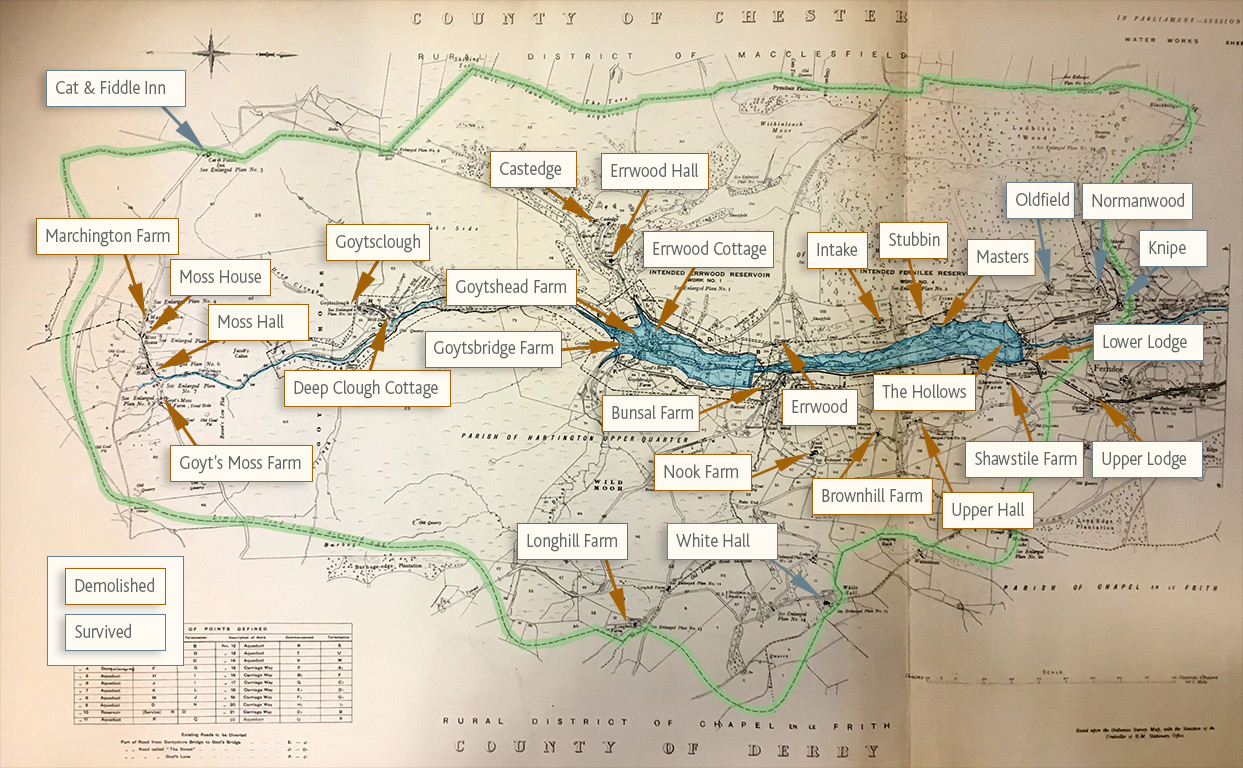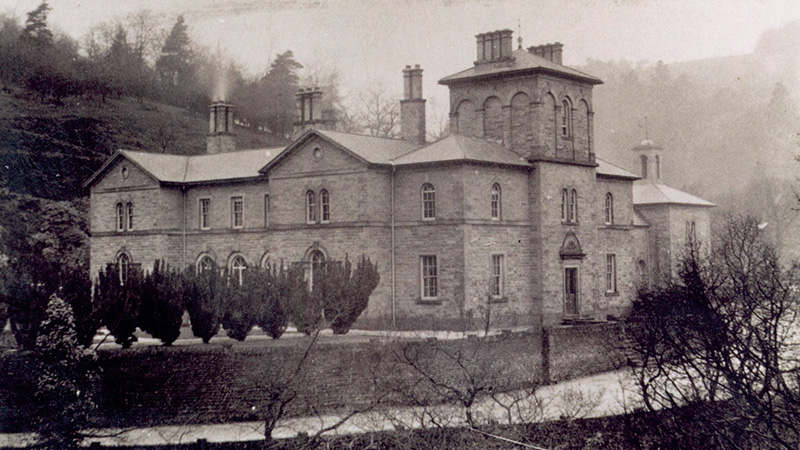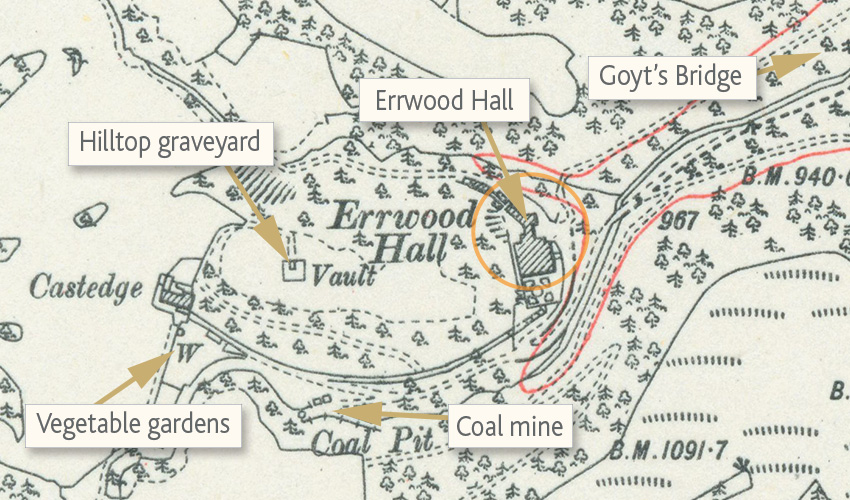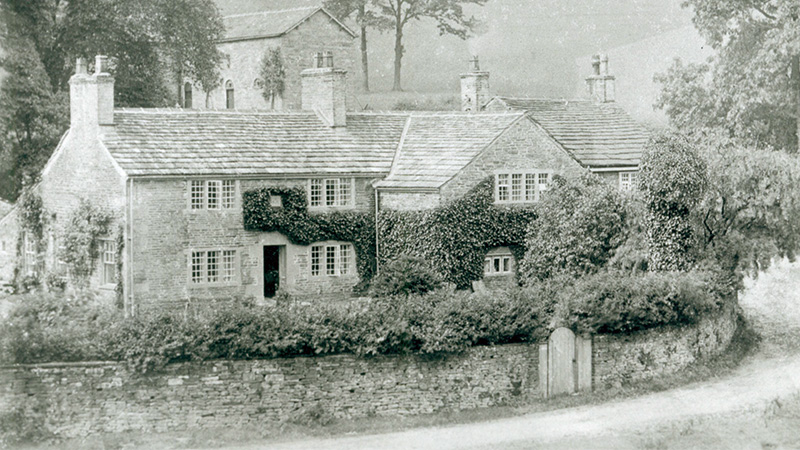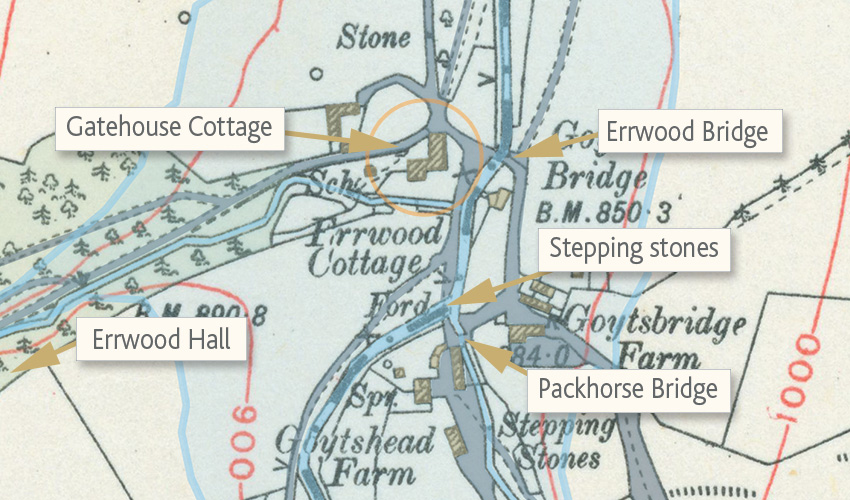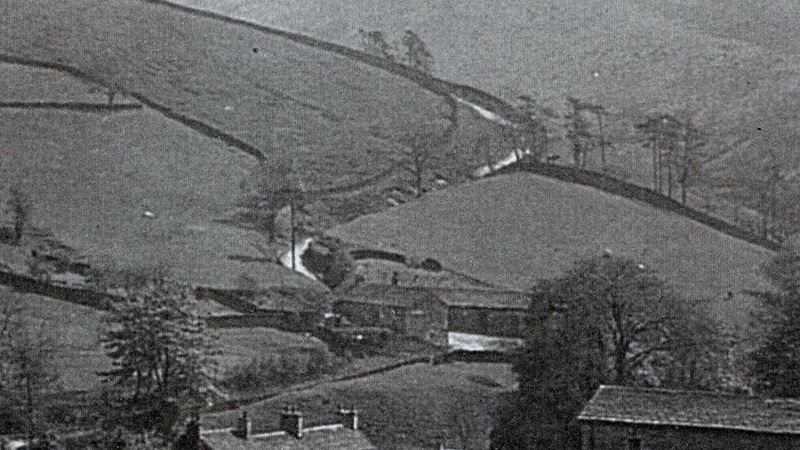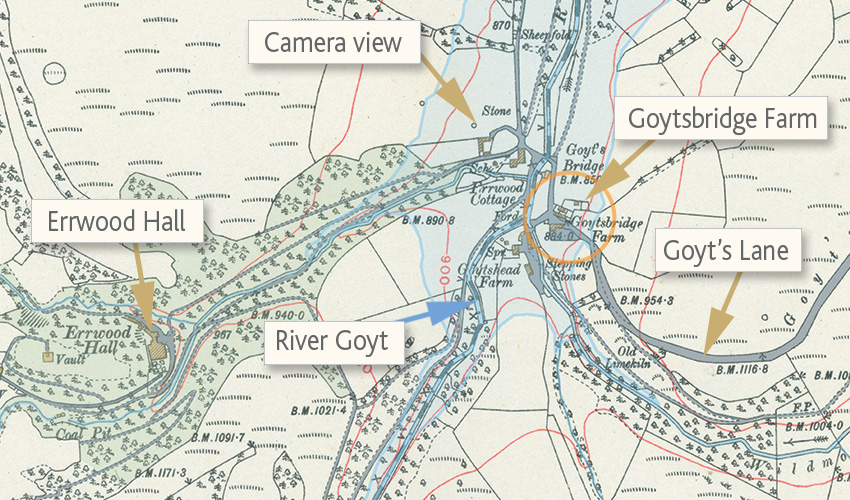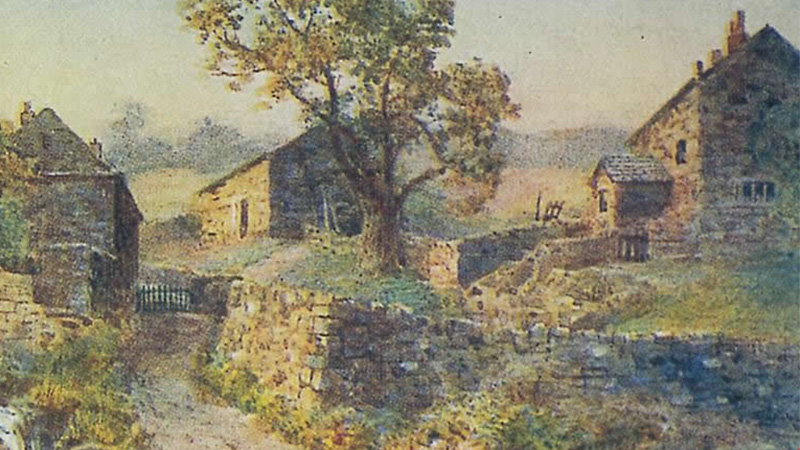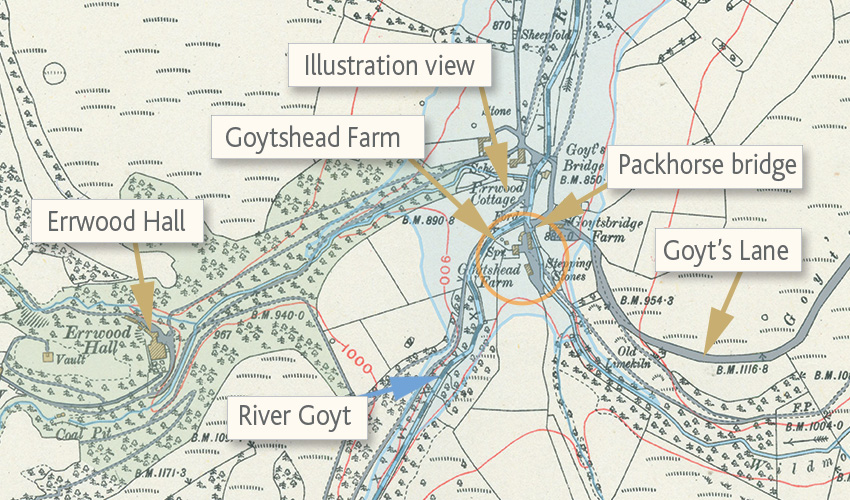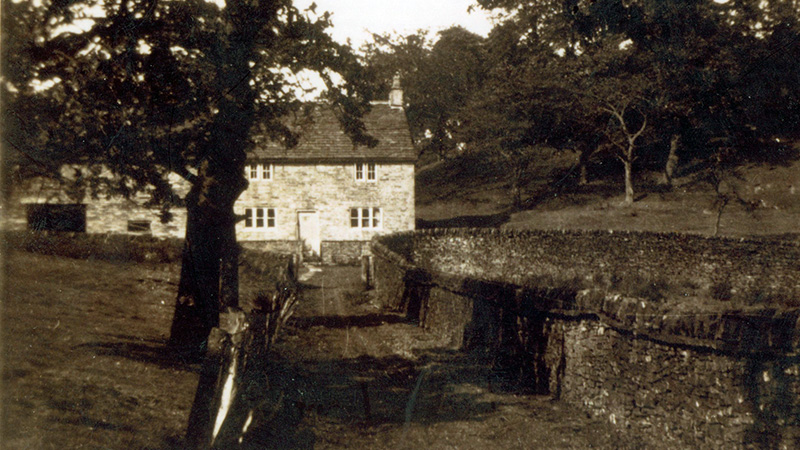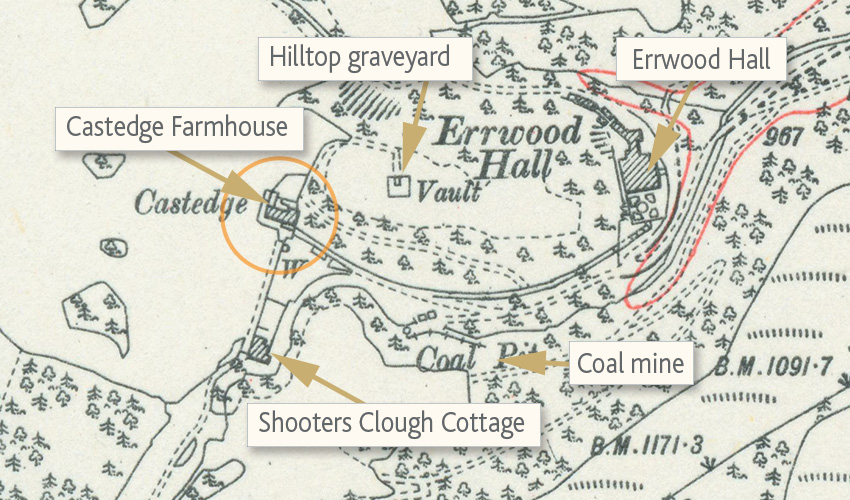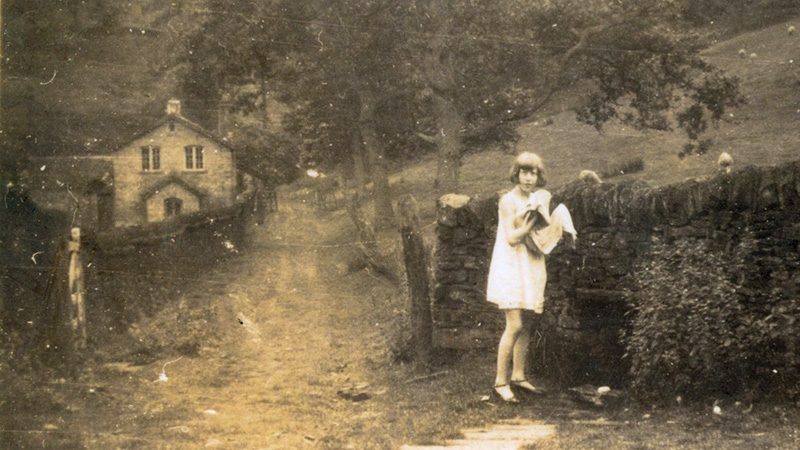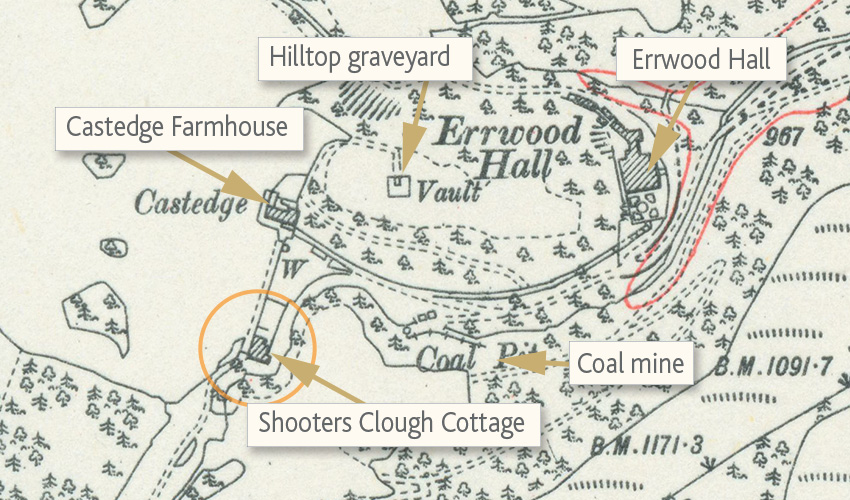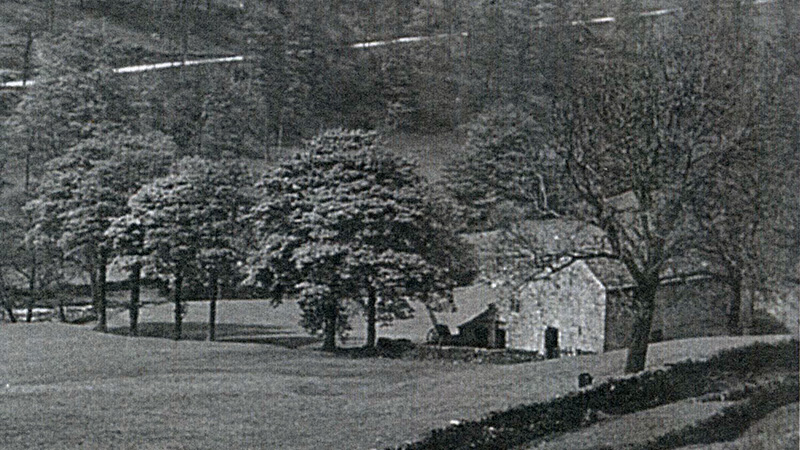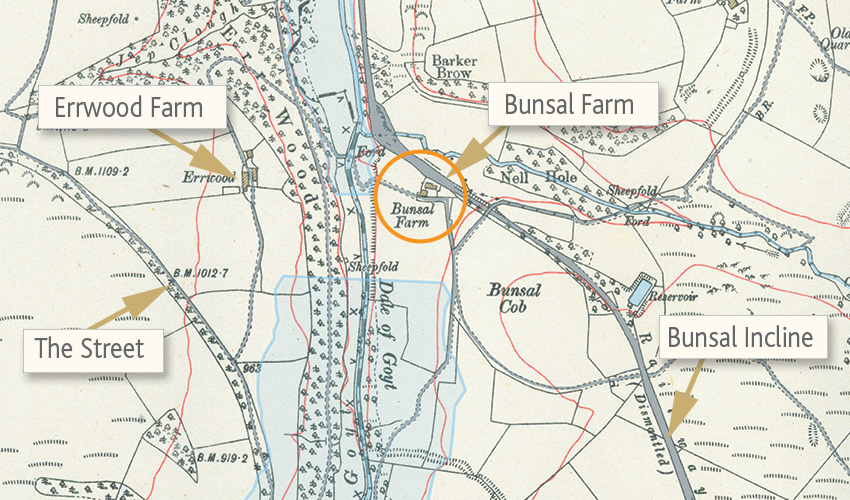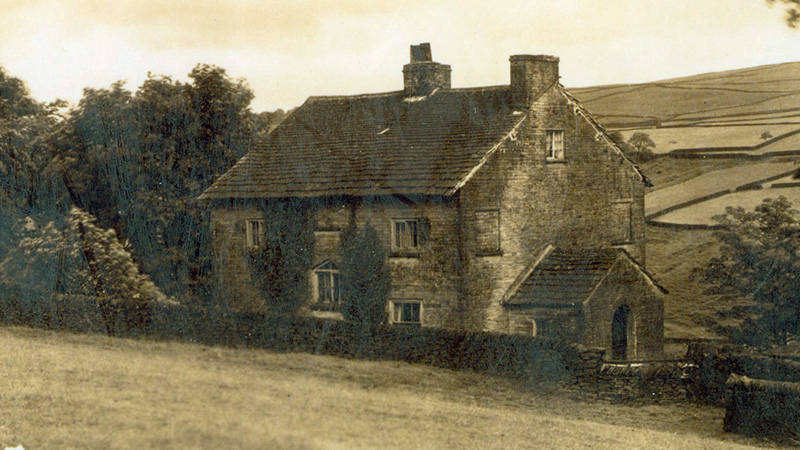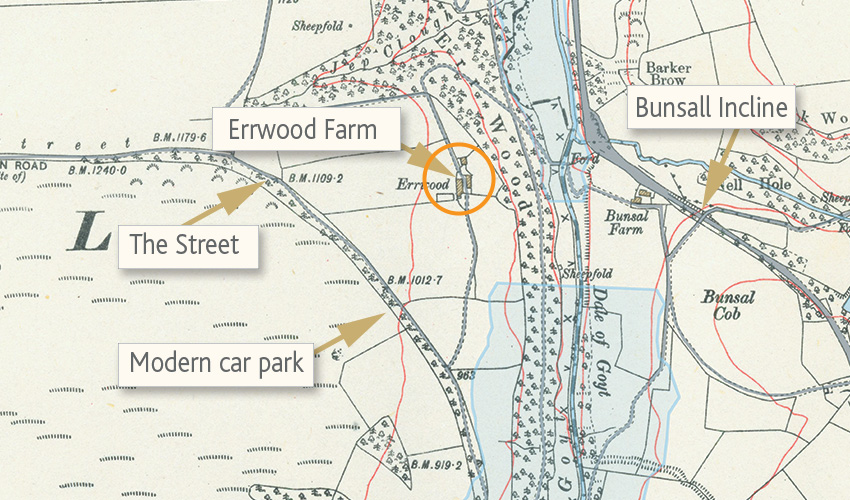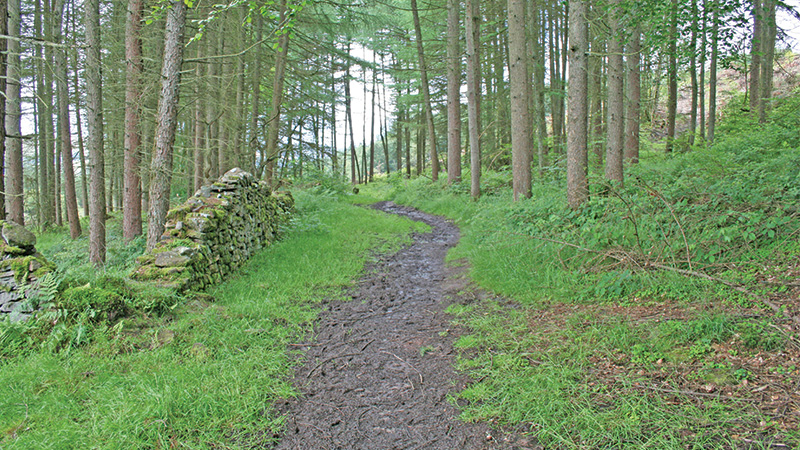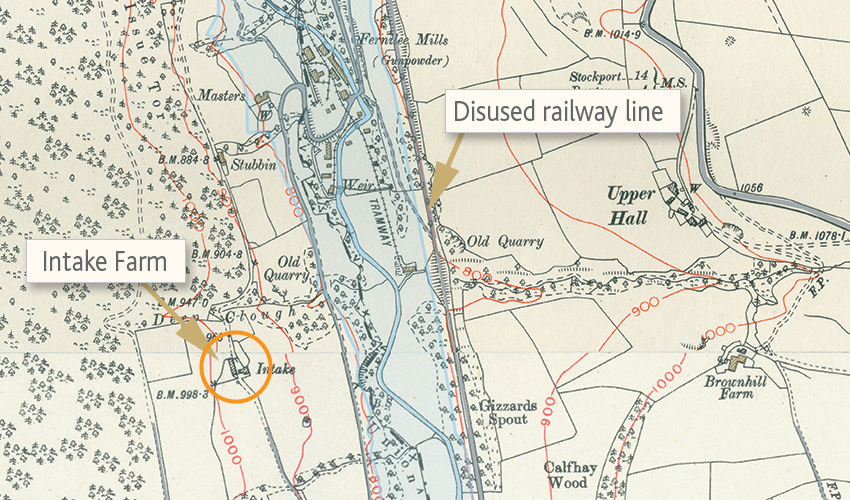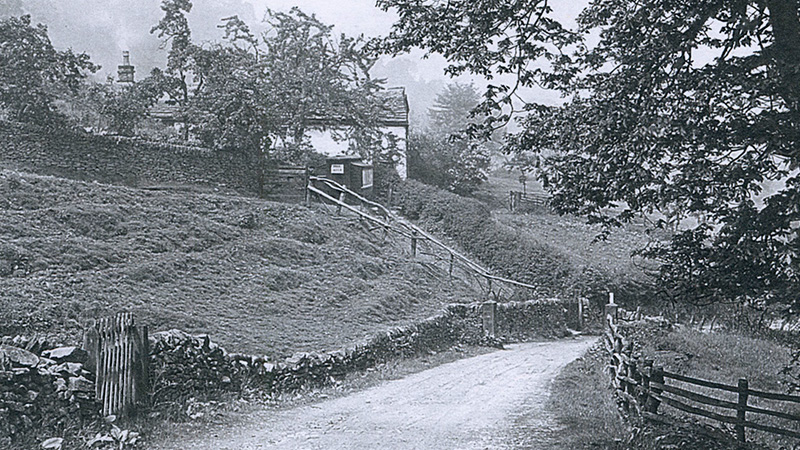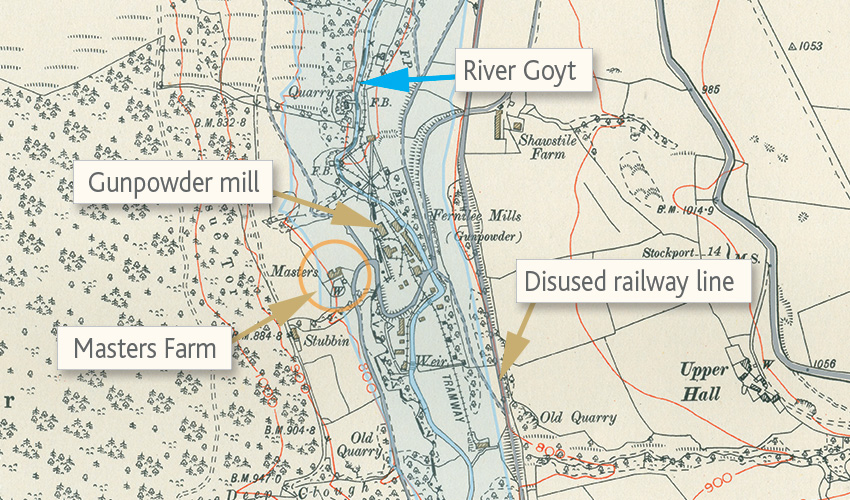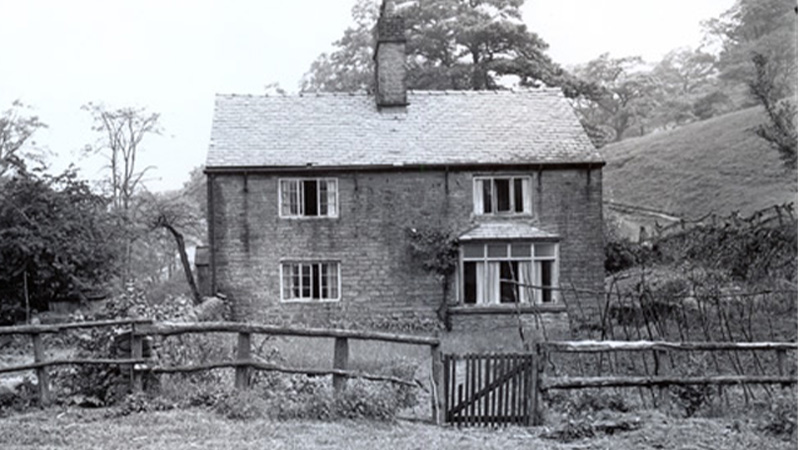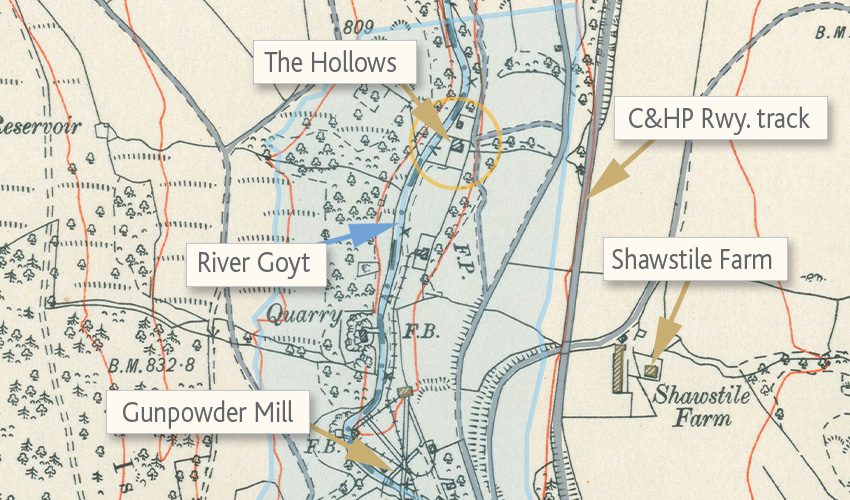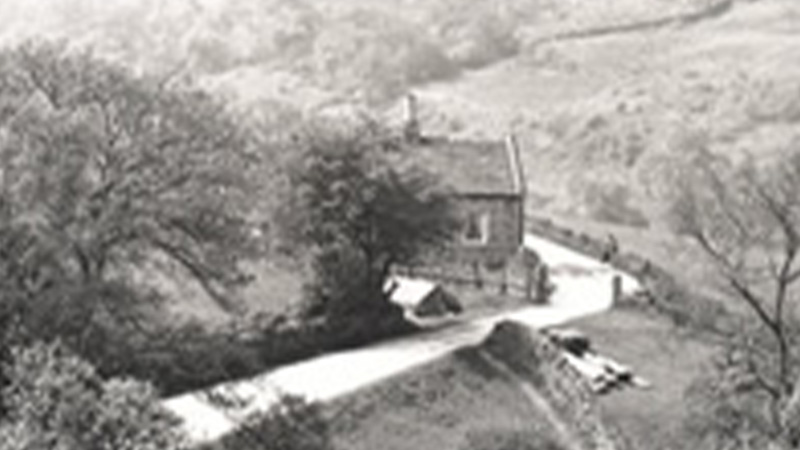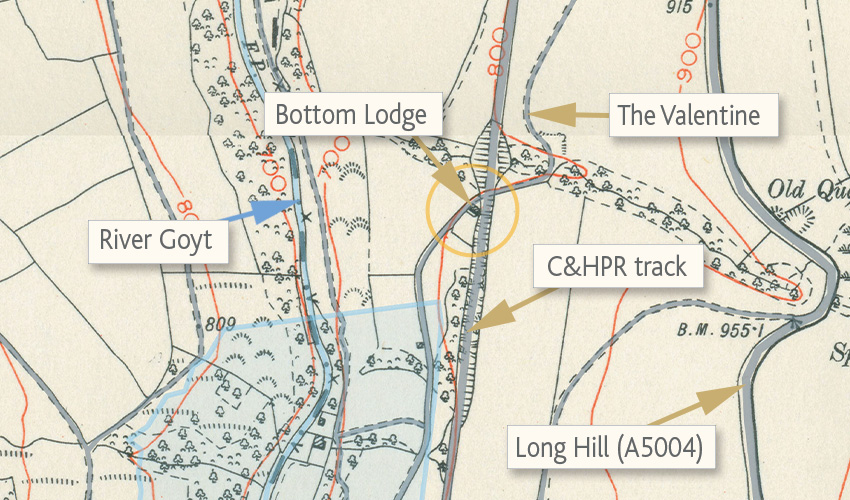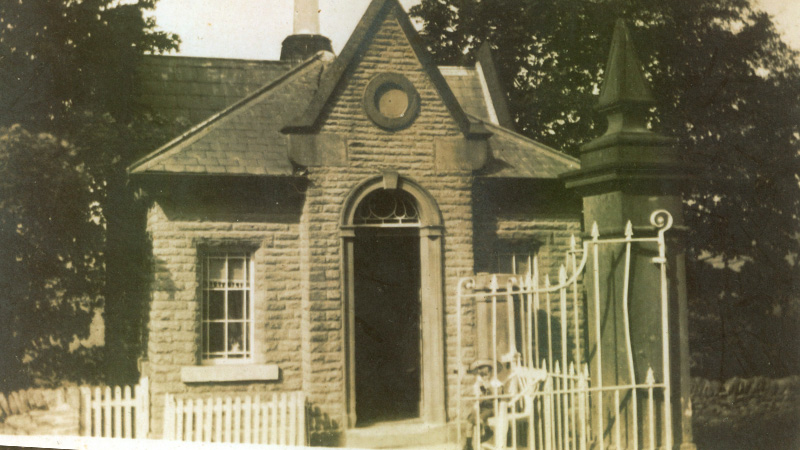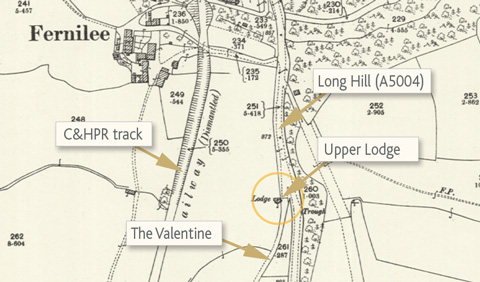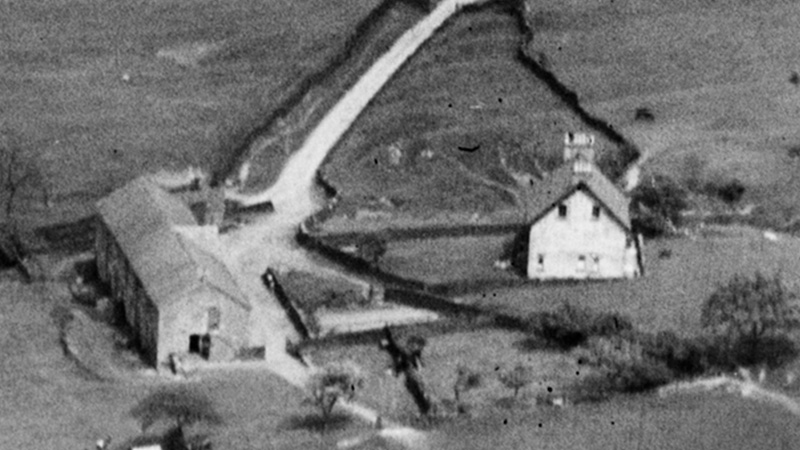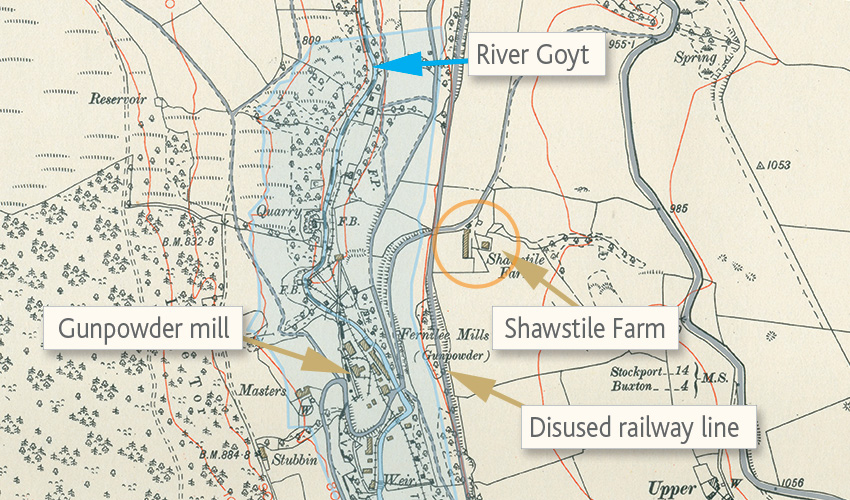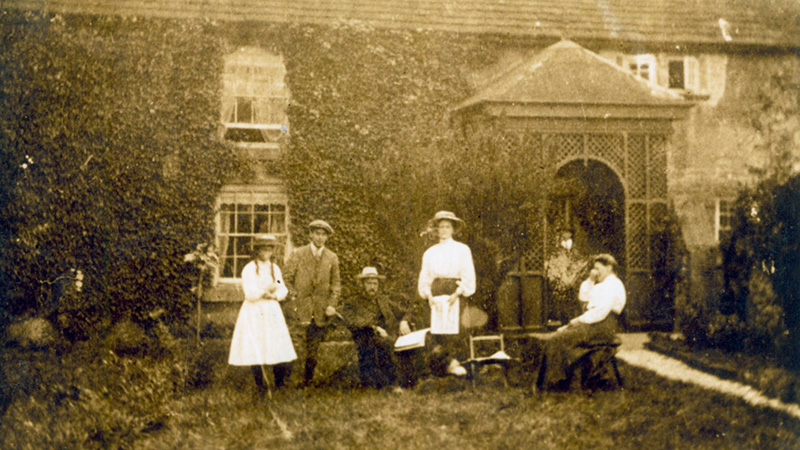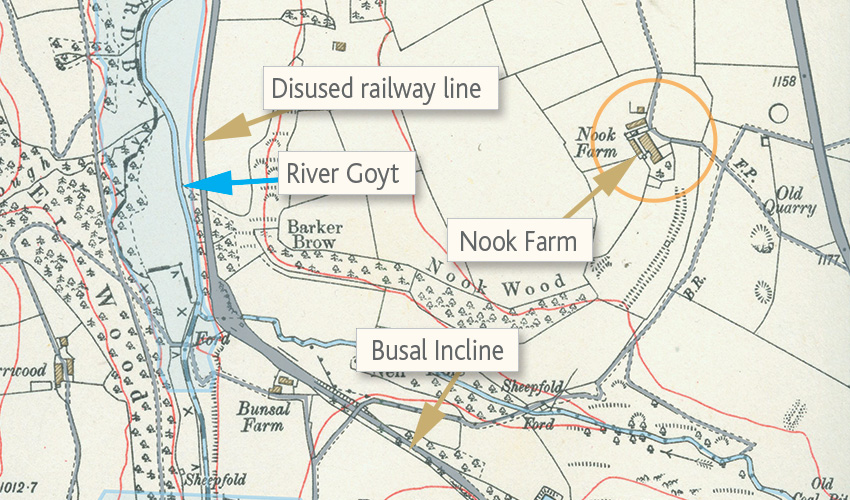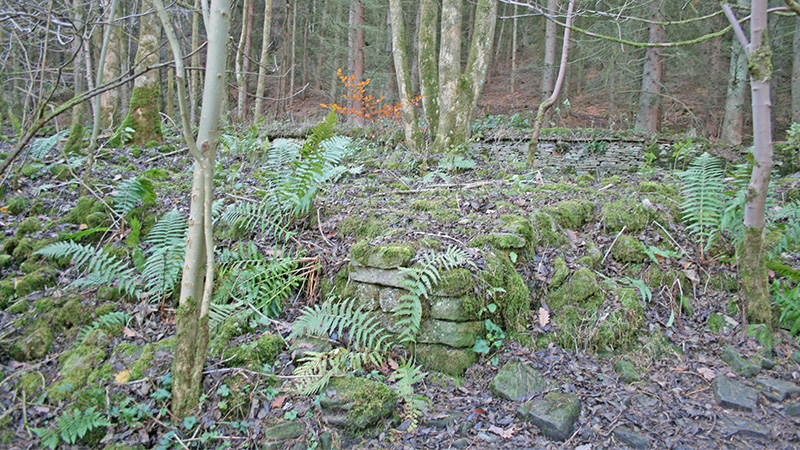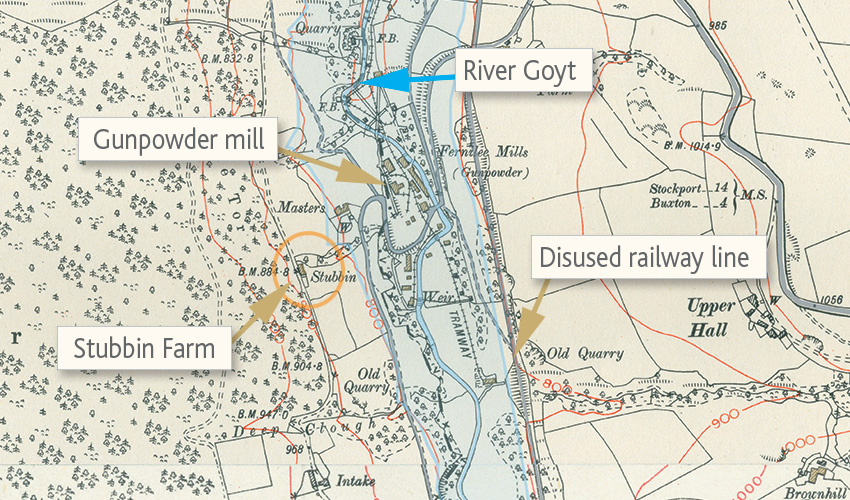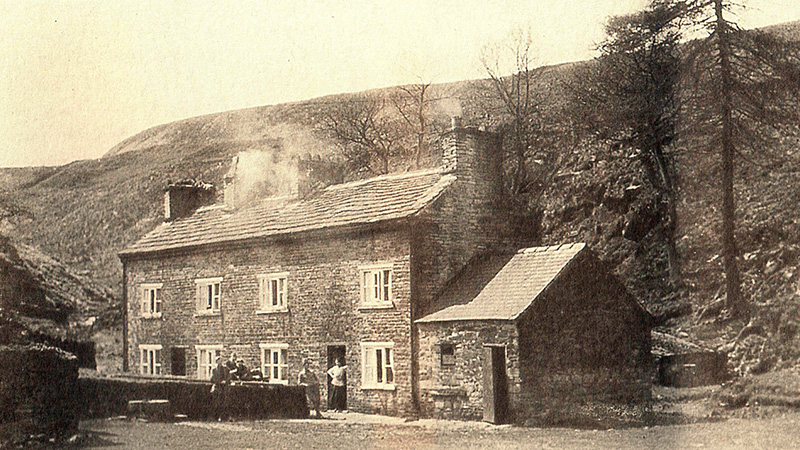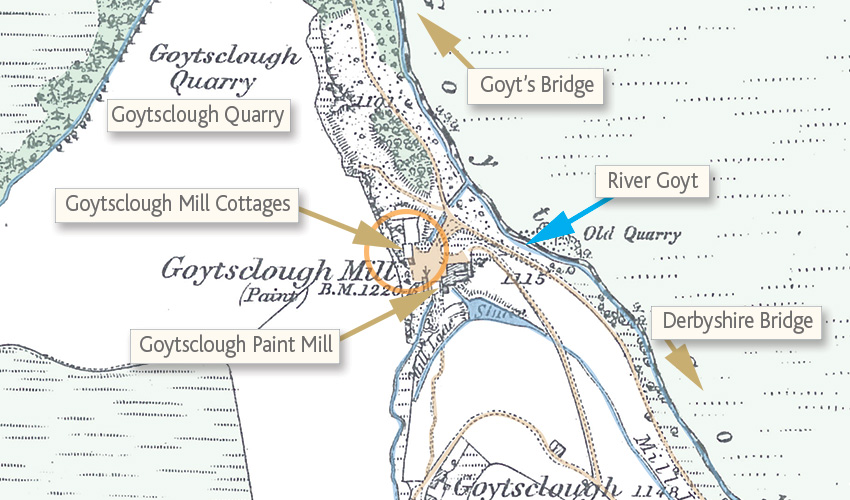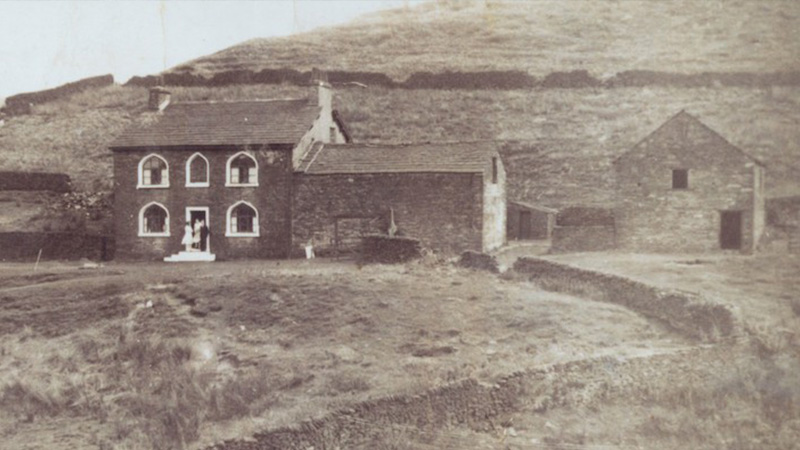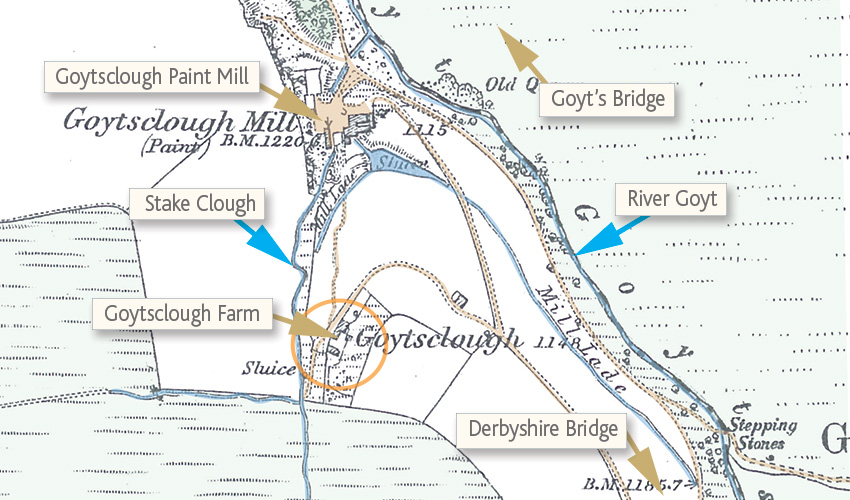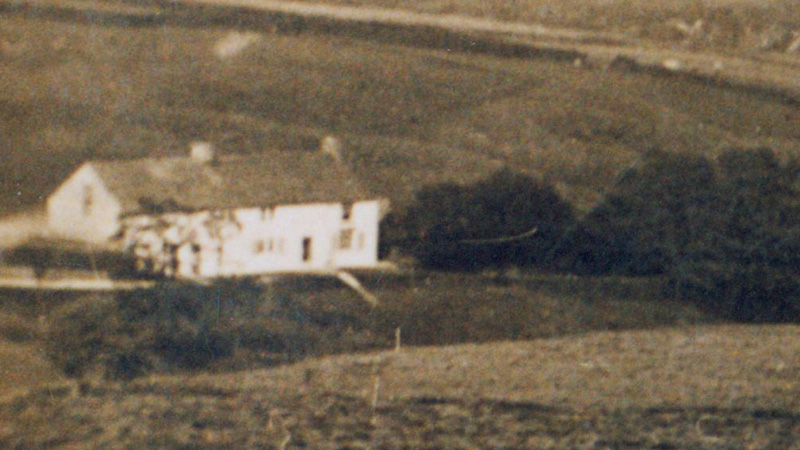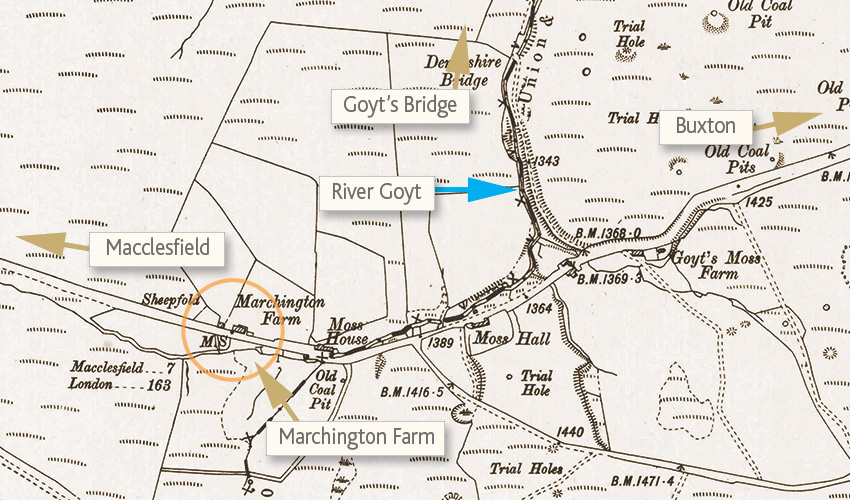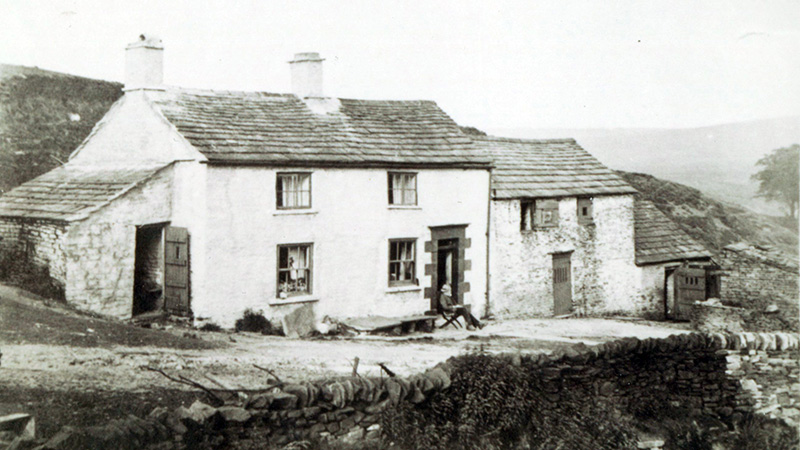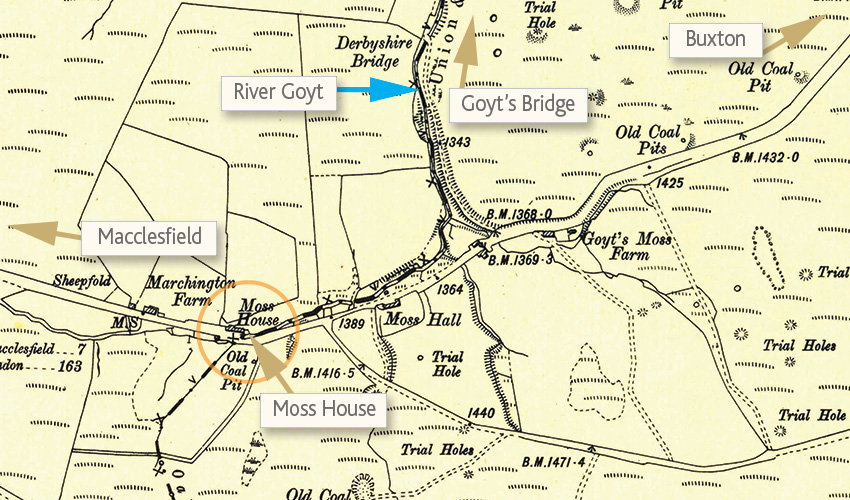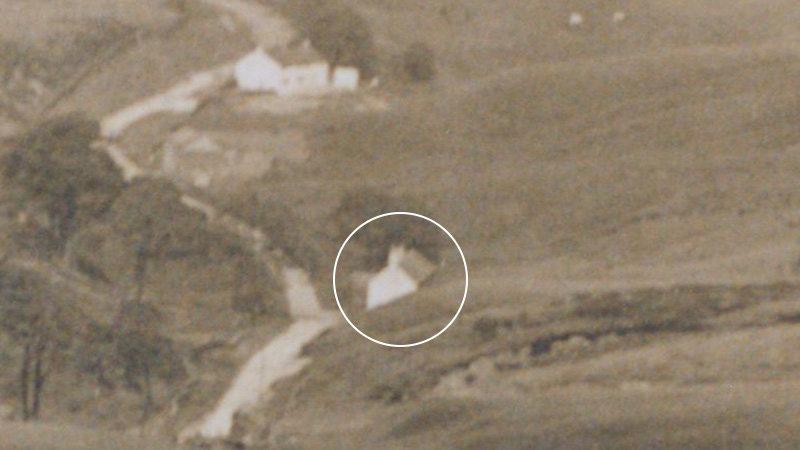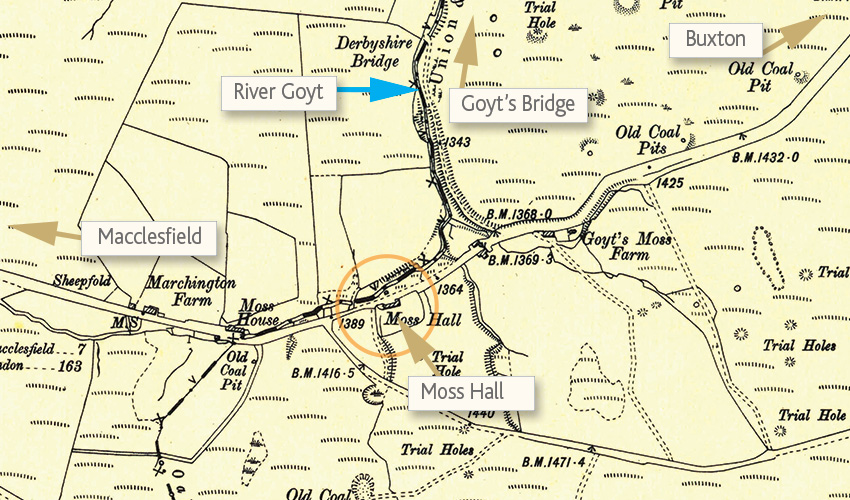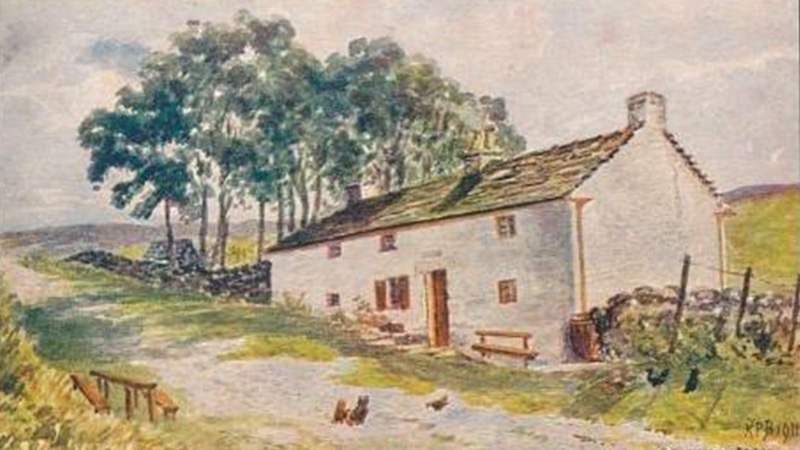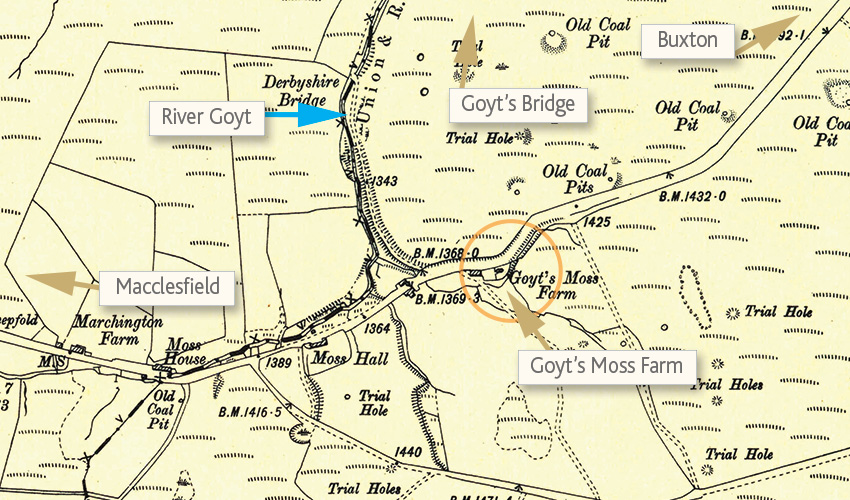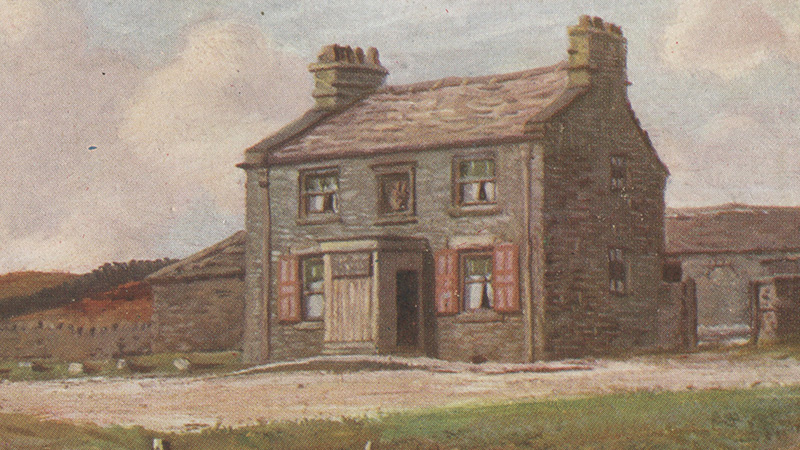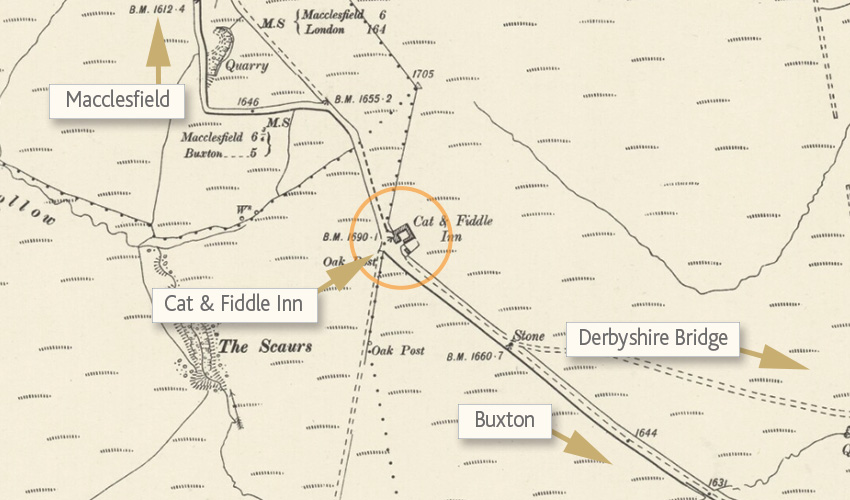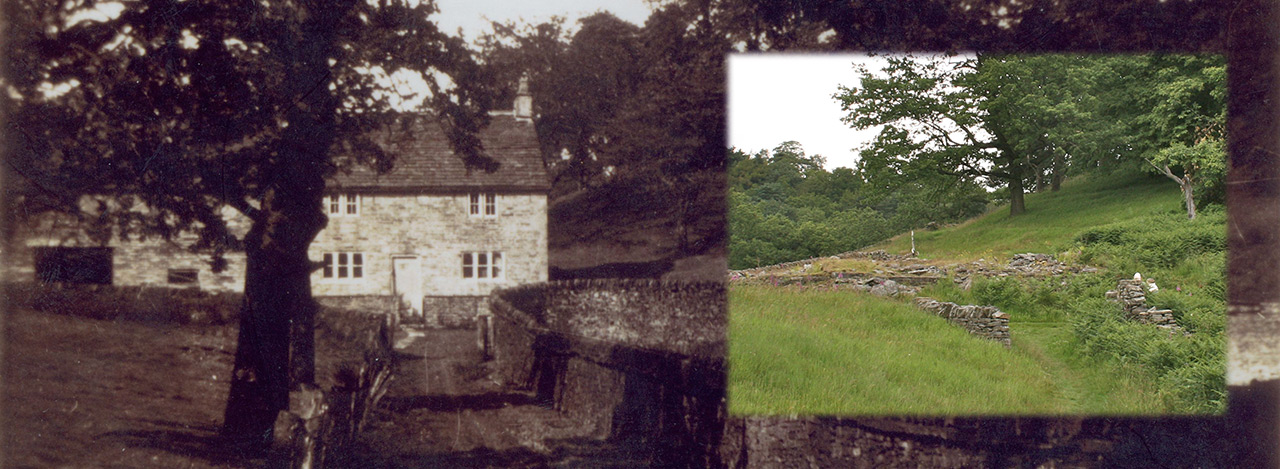
Above: This detailed map (click to enlarge) was published in 1930 by Stockport Corporation to illustrate their plans for the twin reservoirs. I’ve highlighted the boundary in green and identified all the buildings which lay inside, most of which were demolished by the mid 1930s.
Above: Castedge Farmhouse was demolished in the mid 1930s. Today all that remains of this substantial family home is just a sad pile of stones (inset), passed by visitors walking the attractive footpaths around the Goyt Valley.
Goyt Valley houses & families
When Stockport Corporation compulsory purchased the Errwood Estate in 1930 to build the twin reservoirs, it marked the end of a way of life for families who had both lived and worked in the Goyt Valley for generations. Some 24 farmhouses were demolished, along with Errwood Hall, the grand country home of the Grimshawe family who had owned the estate for less than 100 years.
On these pages I’ll try to reveal more about the houses and farms which have vanished from the landscape, and the families who once lived in them. This is very much a work in progress. And any help would be much appreciated – particularly if you can provide any photos or information about the people and buildings. Click here to get in touch.
Click any heading below to view the information collected so far, including census returns and a map. And click on any image to enlarge.
Errwood Hall
Errwood Hall was built in the early 1840s by Samuel Grimshawe, a wealthy industrialist. He purchased the entire Errwood Estate in 1832, which included all the farms and houses listed below. Click to view.
Errwood Cottage
The largest house in the hamlet of Goyt’s Bridge, it stood beside the entrance drive to Errwood Hall and was home to the butler and his family. It also provided accommodation to the Grimshawe’s guests. Click to view.
Goytsbridge Farm
The farmhouse lay at the base of Goyt’s Lane, on the ancient packhorse route between the salt brines of Cheshire and the Roman spa town of Buxton. It was also a very popular tea room. Click to view.
Goytshead Farm
There are some wonderful photos of high tea being served on the terrace outside Goytshead Farm. It enjoyed a scenic view across the packhorse bridge, towards the picturesque stepping stones over the Goyt. Click to view.
Castedge Cottage
Castedge Cottage was once an attractive and substantial farmhouse. Today it’s just a sad pile of stones, lying beside a crossing of footpaths, and beneath the hill-top graves of the Grimshawes. Click to view.
Shooter’s Clough Cottage
Once home to the manager of Castedge Coal Mine, the cottage stood in a picturesque spot beside Shooter’s Clough, a gentle stream which once flooded with such force that it destroyed the mine. Click to view.
Bunsal Farm
The farmhouse lay close to the base of the Bunsal Incline, the long steep road which now forms the main route into the Goyt Valley from the Buxton to Whaley Bridge, Long Hill road. Click to view.
Errwood Farm
Samuel Grimshawe’s son may have stayed here during the construction of Errwood Hall in the early 1840s. It lay beside The Street, and was close to the modern car park between the twin reservoirs. Click to view.
Intake Farm
I haven’t managed to find any photos of Intake Farmhouse. It once enjoyed wonderful views over the Goyt valley, but all that now remains are a few stone walls beside the Woodland Walk above Fernilee Reservoir. Click to view
Masters Farm
This attractive farmhouse once lay beside the old road linking Goyt’s Bridge to Whaley Bridge, and close to the Fernilee Gunpowder Mill. Its ruins now lie under the surface of the reservoir. Click to view.
The Hollows
A fairly substantial house that sat beside the Goyt, just north of the gunpowder mill, and once served teas to the many visitors who flocked to the valley. It now lies under Fernilee Reservoir. Click to view.
Lower Lodge
An attractive cottage which lay at the junction of The Valentine and the C&HP Railway track and must have once been home to the level-crossing keeper, protecting traffic from the nearby gunpowder mill. Click to view.
Upper Lodge
The northern gatehouse to the Errwood Estate, lying at the junction of Long Hill and The Valentine, which may once have been a shop, serving workers travelling to and from the gunpowder mill. Click to view.
Shawstile Farm
Shawstile Farm lay close to the gunpowder mill, and between the Cromford & High Peak Railway line and the Long Hill road from Buxton to Whaley Bridge. But it looks far more peaceful than it sounds! Click to view.
Nook Farm
Lying close to the the Buxton to Whaley Bridge ‘Long Hill’ road, Nook Farm was one of the largest and grandest farmhouses on the Errwood Estate. Click to view.
Stubbin Farm
Stubbin Farm once lay close to Masters Farm, on the western side of the Goyt Valley, and close to the Gunpowder Mill. I haven’t managed to find any photos, but there are some well-hidden remains. Click to view.
Goytsclough Mill Cottages
This substantial terraced house once stood beside the narrow road linking Goyt’s Bridge to Derbyshire Bridge. It would have provided housing for the managers of the Victorian paint mill. Click to view.
Goytsclough Farm
Lying close to both the stone quarry and the paint mill, Goytsclough Farm was in the busiest and most industrious part of the Goyt Valley. Which can be difficult to believe today! Click to view.
Marchington Farm
The first of four houses which once stood at Goyt’s Moss, on a short, windswept stretch of the Macclesfield Old Road between The Cat & Fiddle pub and Derbyshire Bridge, all of which were demolished. Click to view.
Moss House
Life would have been hard for the families who once lived in such a bleak and exposed spot – particularly during harsh winters when they could often find themselves cut off by heavy snow falls. Click to view.
Moss Hall
Moss Hall sounds like the grandest of the four houses that sat close to the Goyt’s Moss coal mines. But the only information I have is a single 1911 census return and a very hazy photo. Click to view.
Goyt’s Moss Farm
Another of the four houses which once stood at Goyt’s Moss, it was rebuilt in the 1930s and is now used by the Peak District National Park Rangers as an information centre and toilets. Click to view.
Cat & Fiddle Inn
This famous pub, lying close to the source of the River Goyt, often features on national news when it’s cut off during snow storms. It was on the edge of the Grimshawe’s Errwood Estate. Click to view.
